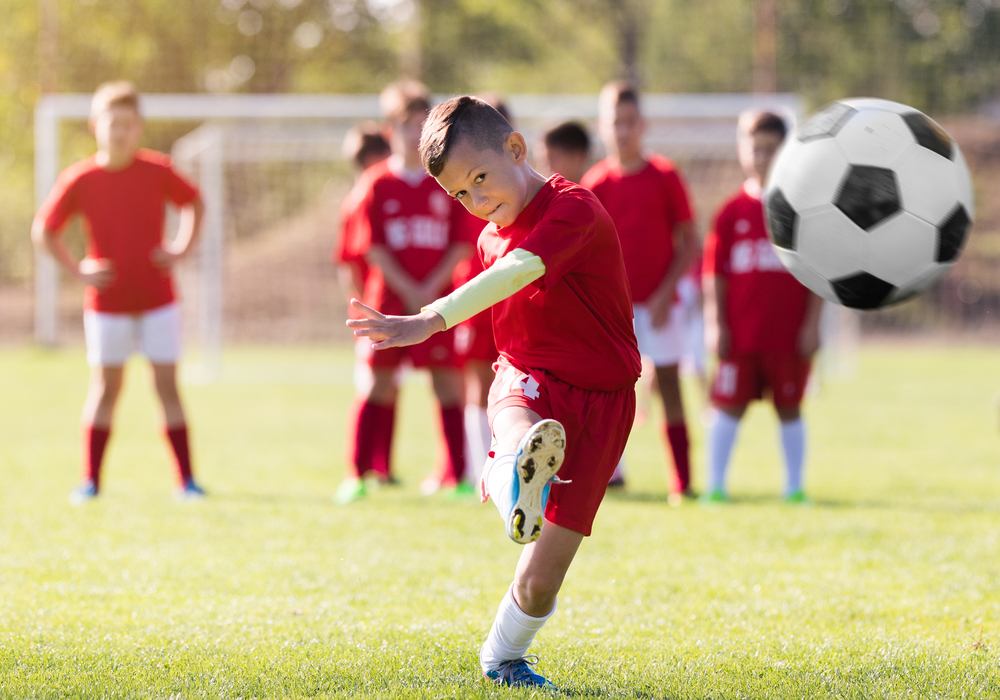 The ever-present exhaustion and aching muscles that often accompany pre-season sports conditioning is a necessary evil that many of us know all about — whether you’ve been through it yourself or noticed it in your children. That’s why it’s crucial to ease slowly back into exercise and strenuous physical activity — and it’s actually more important now than ever.
The ever-present exhaustion and aching muscles that often accompany pre-season sports conditioning is a necessary evil that many of us know all about — whether you’ve been through it yourself or noticed it in your children. That’s why it’s crucial to ease slowly back into exercise and strenuous physical activity — and it’s actually more important now than ever.
Many organized youth sports and various activities have been put on pause during the COVID-19 pandemic. That, along with virtual learning and a lack of recess and P.E. classes has resulted in children exerting less energy and being less active overall.
Now that spring and summer sports are starting to ramp up, kids need to be conditioned and well prepared to get back in that game!
Prevening injury through proper conditioning
According to Jeremy Rush, MD, pediatric orthopedic surgeon with Wolfson Children’s Hospital and Sports Medicine Program director at Nemours Children’s Health System, any form of exercise or special training that can improve an athlete’s performance and help prevent injury is known as conditioning.
“A good conditioning program incorporates different components like strength training, power, agility, endurance, flexibility and stretching, and coordination,” he explained.
Parents should note that conditioning programs may vary based on the child’s age, the particular sport they’re involved in, and their previous level of conditioning.
Before participating in any full-strength sporting event, Dr. Rush suggests six to eight weeks of conditioning exercise. He also recommends families seek the guidance of an experienced professional, such as a school athletic trainer, a physical therapist, or even a personal trainer. A great place to start can be requesting a pre-sports physical with your child’s pediatrician or primary care doctor.
Rising temps
The weather can get very hot here in Northeast Florida, and our bodies need time to acclimate to those warmer temps. Nicholas Peterkin, MD, a family physician with Baptist Primary Care who specializes in sports medicine, suggests building tolerance to heat gradually.
“It’ll take the body up to 48 hours to make the changes to accommodate to a hotter environment,” he noted.
These bodily changes can actually improve your ability to sweat and help regulate body temperature. To aid in this process, Dr. Peterkin’s recommendation is to begin working out in small amounts, even as little as 15-20 minutes maximum for those first few days. Easing into physical activity like this will give your body time to boost your heat tolerance and lower the risk for any potential heat-related injuries.
Hydration is also key — because everyone emits sweat at a different rate. Dr. Peterkin advises drinking sports drinks for any physical activity that lasts longer than 45 minutes at a time. He shares that sports drinks are a better choice than water in these instances because they were specially designed to be consumed when participating in endurance sports.
“The salts and sugar added help avoid dehydration,” he shared. “Good hydration can offset fainting or muscle cramping.”
Sweet dreams
According to Dr. Peterkin, the majority of sports injuries occur when a person is sleepy. When our muscles are fatigued, our risk for injury goes up. This is because tired muscles are more prone to tears. Additionally, sleep deprivation can oftentimes decrease mental alertness, which can lead to technical mistakes.
“Athletes need to rest well and listen to their bodies, including taking breaks when needed,” he said.
For example, if a student stays up too late studying or surfing the internet the evening before an early practice or important game, he or she may become overly tired and at a higher risk of getting hurt.
Getting back in the game
Young athletes should be fully involved in practice for at least one to two weeks without any pain or difficulty before participating in a game or competition. It’s crucial for children and teenagers to be upfront and honest with their coaches and parents when it comes to their physical condition. No one — adult or child — should play through the pain just to get back in the game.
If a child appears to be injured, Dr. Rush notes that parents must remember that there’s a difference between being simply sore and being injured.
“It’s one thing if a player is sore after practice and it goes away the next day,” he said. “If the pain is still there the next day, or it’s getting worse, it may be time to call your doctor.”
Wolfson Children’s Hospital was ranked among the 50 Best Children’s Hospitals for Orthopedics by U.S. News & World Report. If your child has an injury that isn’t improving, Wolfson Children’s Hospital and its partner, Nemours Children’s Specialty Care, Jacksonville, provide comprehensive pediatric orthopedic and sports medicine services for kids and teens of all ages. For more information, call 904.697.3600.
















